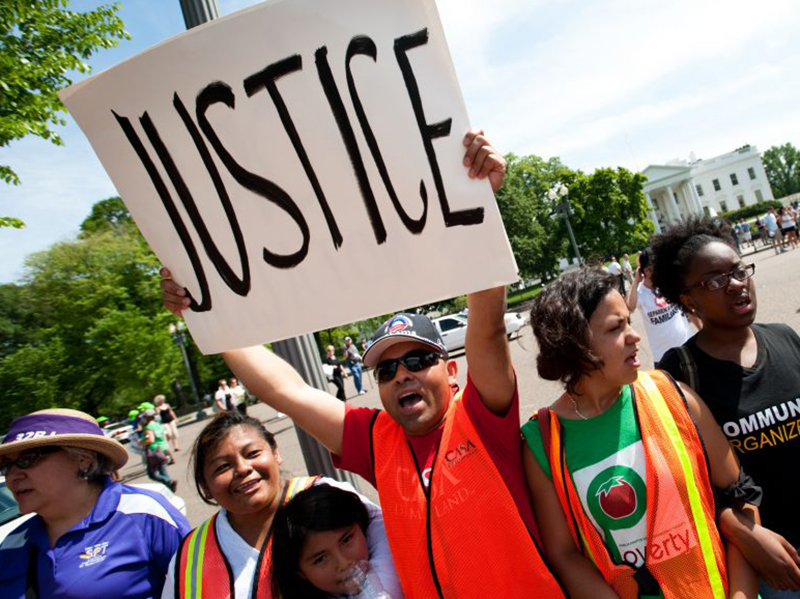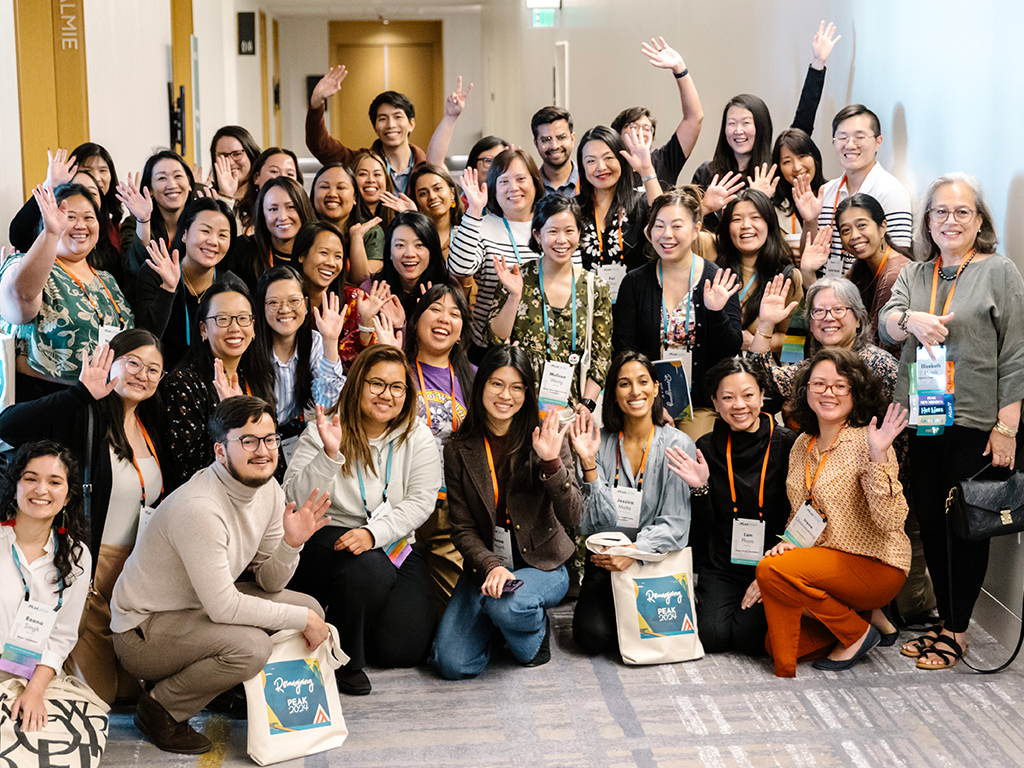Journal | Issue 15
Diversity, Equity & Inclusion
Giving Projects as a Social Justice Grantmaking Model

We are living through an era of extreme wealth inequality, of increased violence towards Black, brown, Muslim, Jewish, queer, and trans people. Our climate is in crisis, and philanthropy is often just a drop in the bucket towards lasting systemic change. In light of this reality, more and more funders are asking themselves, “How do we make a real impact in this world?” “What new questions do we need to be asking?”
Increasingly, funders who consider themselves “progressive” are leaning into social justice frameworks in their grantmaking. But what does that mean, and how can foundations adopt social justice philanthropy practices more intentionally?
Depending on which funder you talk to, a social justice approach looks very different. For some, it is having a grant portfolio or program geared toward movement-building or focused on grassroots organizations amidst a larger set of grant priorities. For others, it informs the way questions get posed in their grant reviews: Are potential grantees addressing the root causes of injustice? Are they led by those most impacted by the issues?
And then, some public foundations have gone a step further, implementing the Giving Project model to bring social justice organizing principles to every facet of their organization and their grantmaking.[1] Started by the Social Justice Fund NW in Seattle, Wash., Giving Projects have been recently highlighted by Inside Philanthropy. The six-month group process organizes a multi-racial and cross-class group of individual donors who do much more than grant reviews. They question personal experiences of race and class privilege and oppression, they fundraise in their communities, and they democratically decide how their funds are distributed, always to organizations organizing communities to address the root causes of issues.
While this model is being replicated across the country,[2] philanthropy has been reticent to engage at a larger scale: it requires a dedicated, trained staff interested in building relationships with every donor, it means less control over the grantmaking decisions. it means centering racial justice, and it means reaching people not traditionally engaged in philanthropy. Indeed, the very point is to reach people and engage with those not currently associated with foundations.
Yet there are three core practices within the Giving Project approach to social justice philanthropy that private or community foundations should consider. These core practices can maximize impact and make philanthropy that much more effectively supports long-term social change.
From Uncritical Giving to Organizations, to Prioritizing Grassroots Organizations
The opportunity: Think about how many people you engage with, and view them all as potential philanthropists and change-makers.
On a day-to-day basis, how often are people asked to think critically about the assumptions and frameworks that inform their personal giving? The dominant motivation for individual giving is to contribute to organizations that individuals have a personal connection to. How can funders move people from thinking about transactional solutions (e.g., backpack programs) and causes (e.g., senior hunger) to funding solutions that systemically address community challenges and community organizing (e.g., bringing the community together to end hunger for children and families while creating a more prosperous future for all)?
The frameworks for Giving Projects create ripple effects for how individuals think about their own giving beyond their involvement with the fund. How does this happen? It starts with Giving Project participants selecting grant proposals from organizational and grassroots leaders committed to organizing communities to address the root causes of issues rather than symptoms. It means funding leaders to facilitate real conversations to build trust that those closest to the issues to have the solutions and embracing the messy process required to organize and build communities rather than championing the most polished proposals. What does this look like?
Imagine building grassroots leadership rather than “high-impact” organizations disconnected from the communities they exist in. Giving Projects open the door to resources for organizations fighting root causes like incarceration, capitalist exploitation, unjust labor practices, environmental racism, and settler colonialism. It opens the door to organizations brave enough to say these words and phrases in their grant applications.
One Giving Project champion I interviewed summed up the impact of these new approaches and how they would impact how he and his wife would give in the future: “[This work] is reaching people at their formative years of philanthropy so that … when I get into a position in 30 years where … my dad died and left [an] inheritance … we’ll handle that experience way differently than if we hadn’t had [the Giving Project]…. It will shift outcomes by supporting these grassroots organizations, and it will shift narratives around what it means to give.”[3]
The takeaway:
Look for ways to create ripples with people in your foundation universe, even if you can’t do a Giving Project. Where are spaces to engage in deep learning and un-learning with donors, board members, staff, or volunteers? Encourage curiosity and ask people what informs their individual giving, and ask if they’ve ever thought about supporting community organizing. Look to organizations doing Giving Projects to learn about their grantees.
From Wealth-Driven Philanthropists to Class-Aware Philanthropy
The opportunity: Value lived experience just as much as class privilege, particularly when selecting board members.
At the heart of Giving Projects lies a core question: Who is considered a philanthropist? The projects are multi-racial and cross-class, and there is no minimum gift size: each contribution goes into the grantmaking total. Most Giving Projects raise an average of $100,000.[4] In this model, the size of people’s contributions is not the most important piece. Lived experience actually becomes invaluable to the process. This new philanthropic approach leads to a more economically diverse group of people making transformational decisions—people representative of the communities philanthropy is actually trying to provide resources to—which means people have meaningful conversations about one of the most taboo subjects: relationships to money and class privilege.
The takeaway:
What if we actually gained the skills to talk about money and class[5] with our boards and the communities we serve and valued a range of lived experiences as much, if not more, than class status? Boards and staff must be more representative of the communities that philanthropy is trying to support, even if it means bringing in new board members who cannot make enormous financial contributions or hiring staff who do not have professional degrees in nonprofit management. There’s much to learn from Giving Projects, especially how to have brave conversations about class privilege and experience that would diversify who gets to participate in decision making and governance.
From community grant review to democratic grantmaking
The opportunity: Broaden who gets to participate in grant reviews, even in private foundations.
Something special happens during Giving Projects. The staff and board of a foundation see a more democratic decision-making process in action: 16-20 individuals who have been doing their own fundraising determine the grant distribution.
While private foundations need not raise funding for future grants, how might they democratize the decision-making process? Community foundations already have community review boards, as do most public foundations. How can private foundations give up some or even all of their power to have a more community-led and representative review process?
In Giving Projects, every participant reviews up to 40 grant proposals in a first review based on criteria that prioritize social justice values and individuals who have historically been least funded by philanthropy. Giving Project participants advocate for the organizations they believe in and challenge traditional decision-makers preconceived notions. This counters implicit bias and disrupts quick judgements about which organizational and grassroots leaders deserve grants. The final grant review, based on consensus, grants, on average, $20,000 to 10 grantees over a two-year period. The feeling at this stage is palpable: Giving Project participants feel solidarity with grantees because they have decided where money is going and how it can impact long-term social movements. That’s 20 more people that see themselves as part of a movement, as part of philanthropy, as part of community change!
The takeaway:
Regardless of your foundation structure, how can you democratize the grant-review process in meaningful ways? Get creative. Think outside the normal boxes we place on foundations. Be motivated by the idea that your foundation can be seen as a welcoming place prepared to avoid tokenizing community members. You’ll probably spread the word about your grantmaking along the way, too, and maybe even get some new grantees. And if you ask low-income folks to give up their time, consider paying them to participate rather than expecting their energy. After all, their expertise is guiding your foundation’s grantmaking, and they likely know their community better than your staff or board.
As Giving Projects gain more prominence across the country, we’re going to see a greater move towards these principles. Rather than thinking that our foundation could never do that, why not ask, “What pieces of that might we be able to try?”
Who knows, we might even move the needle on social justice along the way.
Footnotes
- In my dissertation research, I explicitly look only at organizations who have imbued social justice into all aspects of the organizations, not just into other portfolios, because these represent the learning edge of the field while still sitting within foundations.
- To date, it’s been adopted by five additional public funds.
- Anonymous interview, March 2015
- Some funds are moving to two-year gifts, but the average raised per year is still $100,000.
- For more tools on how to do this, see http://www.classmatters.org/ or www.resourcegeneration.org


